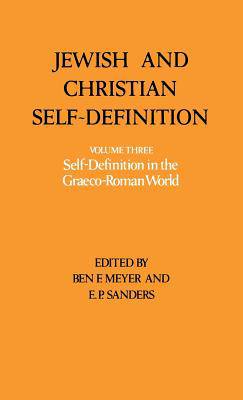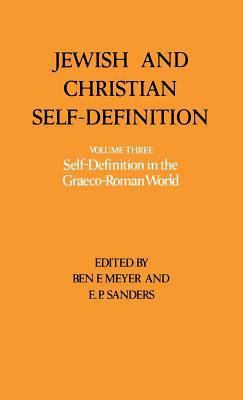
- Afhalen na 1 uur in een winkel met voorraad
- Gratis thuislevering in België vanaf € 30
- Ruim aanbod met 7 miljoen producten
- Afhalen na 1 uur in een winkel met voorraad
- Gratis thuislevering in België vanaf € 30
- Ruim aanbod met 7 miljoen producten
Zoeken
Jewish and Christian Self-Definition: Vol. 3 Self-Definition in the Graeco-Roman World
Ben F Meyer, E P Sanders
Hardcover | Engels
€ 94,95
+ 189 punten
Omschrijving
The series which this volume continues is an exploration of the way in which both Judaism and Christianity moved towards normative self-definition in the first centuries of the common era. Neither willingly settled for pluralism, but each chose a normative approach which determined what set of suppositions, values and practices would henceforward inform the corporate life of the group. Judaism became Rabbinic and Christianity Catholic. The first two volumes looked at Christianity and Judaism respectively; the third volume approaches the question of self-definition in a rather different way. When Judaism and Christianity were moving towards the mature normativeness epitomized in the Mishnah and the rabbinate and the New Testament and the episcopate, were they moving with the general tide of Hellenistic and Roman history, or against it? Was the direction of their development typical or idiosyncratic? Was its explanation to be found in the sphere of comprehensive social causes? Are persuasive analogies to be found in the history of the institutions of the Graeco-Roman world or in the native tendencies of Judaism and Christianity? These questions are tackled here in a rich collection of essays, which brings the main stage of the study as a whole to a fitting climax. A fourth and concluding volume is in preparation. Contributors are: Hans Dieter Betz, G. W. Bowersock, Walter Burkert, John M. Dillon, Albert Henrichs, Howard C. Kee, Abraham J. Malherbe, John M. Rist, Tran tam Tinh and Heinrich von Staden.
Specificaties
Betrokkenen
- Auteur(s):
- Uitgeverij:
Inhoud
- Aantal bladzijden:
- 316
- Taal:
- Engels
Eigenschappen
- Productcode (EAN):
- 9780334008224
- Verschijningsdatum:
- 2/08/2012
- Uitvoering:
- Hardcover
- Formaat:
- Genaaid
- Afmetingen:
- 140 mm x 216 mm
- Gewicht:
- 512 g

Alleen bij Standaard Boekhandel
+ 189 punten op je klantenkaart van Standaard Boekhandel
Beoordelingen
We publiceren alleen reviews die voldoen aan de voorwaarden voor reviews. Bekijk onze voorwaarden voor reviews.








